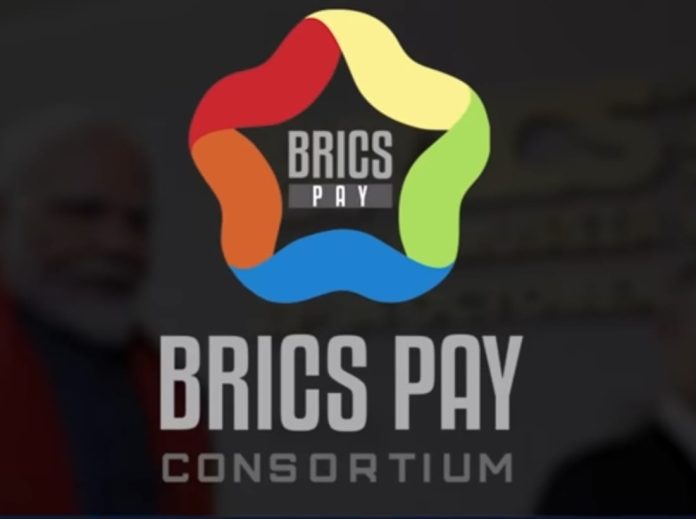– Dr. Farhat Husain
The organisation of BRICS countries (Brazil, Russia, India, China and South Africa) has emerged as a force against the hegemony of Western countries in the last two decades. Now some other countries, Iran, Egypt, Ethiopia, Indonesia, United Arab Emirates, Saudi Arabia have also joined this group. Recently, in the Summit held in Rio de Janeiro, the capital of Brazil, measures to reduce dependence on the US dollar were considered and a new plan was approved. Under this, a plan has been made to implement a new digital payment system called BRICS PAY. The purpose of this new payment system is to reduce dependence on the US dollar. Navbharat Times (11 July, 2025) has described it as a campaign for freedom from the dollar:
“Recently, the leaders of the BRICS countries met in Rio de Janeiro, the capital of Brazil. There was handshake, declarations and talk of improving global governance in the meeting. But a serious question behind this was who runs the global system and how long can the world depend on the US dollar?”
The Story of the Rise of US Dollar
Before the World War-I, the British currency, the pound sterling, was the world’s leading currency. It was used in international payments. At that time the gold standard was in force, that is, the currency was printed in proportion to its gold reserves. When the war started, many countries said goodbye to the gold standard due to military expenditure. Britain continued the gold standard, but under the pressure of the situation, the pound sterling was delinked from gold in 1931. From here the prestige of Britain’s currency started declining.
America continued the gold standard, that is, America was printing currency in proportion to its gold reserves. In the course of the World War-II, in 1944, the US dollar got the opportunity to rule the world economy. In the World War-II, the arms supplied by the US to the British-led Allies were paid for in gold. Thus, three-fourths of the world’s gold reserves reached the US. In 1944, through the Bretton Woods Agreement, 44 countries decided that international trade would no longer be done through gold but through the US dollar and the US dollar would remain linked to gold. Thus, the US dollar became a monopoly in global transactions.
In 1971, US President Nixon delinked the US dollar from gold in view of the cost of the Vietnam War. Amidst the fear that this decision would hurt the reputation of the US dollar, the US entered into an agreement with the oil producing countries, i.e. OPEC countries, in 1973, which was called the Petrodollar Agreement. Under this agreement, it was decided that oil would be paid for only in US dollars, in return for which the US took responsibility for the security of the OPEC countries. Till 2023, 80% of the world’s crude oil was being traded in US dollars. Other currencies like Euro, etc. could not perform very well against the US dollar. Thus, it can be said that the US dollar has been the king of the global economy for almost a century. The dollar is not only a means of international trade, but through it the US has gained special power in the global economy and politics.
Complaint
Many countries are unhappy with this monopoly of the US dollar, among which Russia and Iran are at the top. The sanctions imposed by the US on Russia during the Russia-Ukraine war have affected the Russian economy. Russia believes that the US took this step due to its monopoly on the US dollar. This monopoly of America should come to an end. Similarly, Iran also complains to the US that it has imposed unnecessary sanctions on Iran. China and some other countries are also seen complaining about the US.
New System
Last year, there was a discussion about bringing its own currency in the meeting of BRICS countries, but in the recent meeting it was decided to start a digital payment system. With this new payment system dependence on the dollar will be reduced. Through this system, direct trade transactions will be possible between member countries and transactions will be possible even without the US dollar or the SWIFT (The Society for Worldwide Interbank Financial Telecommunications) system. If we look at the economic data of the founding countries of the BRICS organisation and the countries that have joined it so far, it is clear that these countries have an important part of the world economy.
According to Financial Express (July 16, 2025):
“It (BRICS) now represents 45% of global population, 37% of world GDP, and 25% of global trade. This expansion reflects a clear shift in BRICS’ ambitions, from a coalition of emerging economies to a more globally influential political and economic bloc.” This means that these countries have an important place in the global economy.
Initiating new payment system is definitely a revolutionary decision. This system is designed to enable cross-border payments in local currencies, potentially reducing reliance on the US dollar and bypassing the SWIFT system, a messaging network used by banks for international transactions. The restrictions imposed by America in global transactions will also be affected. It is also being said that the new digital payment system is better than the US system. Through this, trade transactions between BRICS countries will increase, especially the mutual trade of agricultural products will go up.
India
India is an important part of the BRICS organisation. It should be noted that the new digital payment system is based on India’s payment system UPI, which is considered a better system among the systems prevalent in the world, because it transfers money at a fast speed. This new system will boost India’s international trade. Here it should not be ignored that the US administration is not happy with the implementation of the new system and President Donald Trump has announced to impose high tariffs on the trade of these countries.
American Concern
The new payment system of the BRICS group is still in its initial stage. But since many major economies like China, Russia, India, United Arab Emirates, Saudi Arabia, etc. are affiliated to it, transactions without US dollars can reduce the monopoly of the US dollar to some extent. There is no major threat to the US dollar right now, but this is a beginning which can take the form of an alternative system in the future and can also prove to be a big challenge to the US dollar, which is a matter of concern for America.




